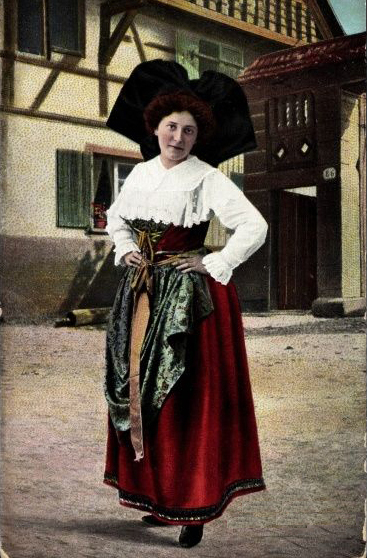Clara Freudenreich
Member since 2003


When Clara Freudenreich was born in Strasbourg in 1944, no one suspected that she would one day go down in the history books as a dinosaur whisperer. The youngest child of six, she grew up on a farm in post-war Alsace. Even at an early age, it became apparent what would later be the key to her success: her extraordinary talent in dealing with animals.
“What she did with the animals in the yard was … just unbelievable. She managed to teach even the dumbest chicken elaborate tricks. Even the nasty geese were tame around her. That always impressed us kids. And, of course, none of the boys from the neighbouring farm would dare annoy her.”
– Luc Petit, Madame Freudenreich’s Cousin
By the age of eight, Clara Freudenreich was accompanying her father to the regular appointments with veterinarian and blacksmith, because only she could keep even the unruliest stallion in the yard in check.
However, it became too much for her tradition-conscious parents when she reached the age of 12 and began to secretly keep lizards and snakes in her room. They forbade her from dealing with any exotic animals due to worries that she would not be able to fulfil her duties on the farmyard. Her parent’s plan was clear: one day, Clara would take over the farm.
It was only her grandmother Sophie that showed understanding for the young Clara at the time. Although she too was deeply rooted in the Alsatian tradition, she continued to tell her granddaughter how important it was to follow her heart.
“My grandmother was my biggest role model. She led a very modest life, but I knew from an early age that the heart of an adventurer beat in her chest! At some point she told me that, as a young woman, she spent a whole summer with a pack of wolves that had accepted her as a member of their community. That was eye-opening for me. It inspired me to take life into my own hands … there’s no other way to put it. By the way, I also inherited my Alsatian costume from her. And that continues to suit me just fine to this day!”
– Madame Freudenreich
After a class trip to the Eifel, 14-year-old Clara Freudenreich became an overnight celebrity in the local press. In a small stream, she discovered a salamander species that had never before been spotted in Europe. A number of renowned biologists then offered her an internship. The young Clara was fired up, and her passion for discovering new species had been sparked.
She moved out immediately after finishing school to accompany the well-known biologist August von Haekel on an expedition to Uganda and gained valuable experience under his guidance.
In the following years, she toured all five continents and made a name for herself through her special instinct when it came to finding remote places that hid varieties of animal species.
At the age of 28, she detected an underwater cave in Venezuela that had been cut off from the rest of the ecosystem for thousands of years. Inside she found not only species like the arrowhead crab, which had died out around the rest of the world, but also entirely new species whose evolution had been completely independent of any external influences. She also discovered, among other things, the striped luminescent perch, which was named as Percoidei Freudenreichienae in the scientific literature.
Her talent in dealing with the animals continued to be maintained, and so she was able to win over every wild and exotic animal throughout her travels. She swam with crocodiles in the Amazon and tussled with tigers in Siberia.
“She has something that I’ve never seen before …”,
wrote August von Haekel about Clara Freudenreich in his expedition reports in 1970.
“This gift to tame a wild animal using only eye contact between them. It’s as if she spoke the language of animals, as if she could read their minds.“
Even though her parents may not have expected it, Madame Freudenreich always remained true to her Alsatian background during her travels over the decades. Even on the most daring missions, she naturally wore the traditional clothes of her grandmother. Whether training cobras in Cambodia or Gorilla settlements in the Congo, the outfit remained on and at 3 o’clock, tea was always served alongside home-baked Gugelhupf.
It seems unnecessary, even ridiculous, to want to mark a particular climax of her career in this life’s story. But Clara Freudenreich, after all of her adventures, succeeded in accomplishing a feat during an advanced age of discovery that made all her colleagues pale in disbelief.
In a crevasse in Venezuela in January 2002, she detected several dinosaur eggs trapped in the eternal ice. She carefully freed the eggs and, along with her colleagues, planned an unprecedented experiment: to hatch the eggs. For several months, scientists worked with elaborate equipment to hatch the eggs or at least to remove unhatched dinosaur embryos from within them. However, it was using the simplest means that Madame Freudenreich managed to succeed in doing what all her colleagues had failed to. Kept warm using a homemade scarf and wrapped in a vinegar wrap, several eggs were hatched in the spring of 2002. Various types of dinosaurs were hatched and kept secret from the public at her research station in South America over the following months and years.
After high-ranking members of ACE were allowed unparalleled access to Clara Freudenreich’s research station in 2003, they were able to witness the liveliness of the dinosaurs. Madame Freudenreich was immediately admitted into the Adventure Club of Europe.
The years went by and the demand of the public grew louder, especially once these alleged dinosaurs were allowed to be scrutinised. However, Clara Freudenreich wanted to protect her animals from the stress of being put on public display, and refused. After the pressure only increased, she closed the research station forever in 2007. Madame Freudenreich explained that none of the dinosaurs had been able to adapt to the changing climate of the Earth and the experiment had failed. In addition, she announced that she would be retiring and taking over the curiosity shop of her deceased husband.
Since then, she has lived in seclusion in Alsace. The research station was thoroughly investigated, but no traces of dinosaurs could be found. Only in paleontological circles is it still rumoured that Madame Freudenreich had some of the eggs secretly taken home. When questioned she denied this, but sent the ACE a tin of home-baked biscuits to mark its 300th anniversary – all shaped liked dinosaurs.

